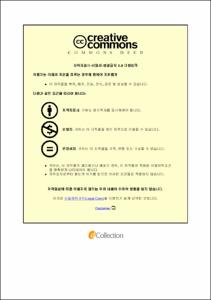발광다이오드(LED)와 미세조류를 활용한 오염퇴적물의 중금속(Cu, Zn) 제거 가능성
- Abstract
- As mentioned in other studies, phytoremedition or bioremedition didn’t cause the secondary problems and the expense is more cheaper than physical methods. Therefore using of plants, microalgae and so on, it might be eco-friendly mothods. In order to remediate of heavy metals in contaminated sediments, phytoremediation using light-emitting diode (LED) and diatom Phaeodactylum tricornutum, Skeletonema sp., benthic microalgae Nitzschia sp., marine green algae Chlorella vulgaris were used in this study. Therefore, this study examined the possibility whether using microalgae and LED can remediate of heavy metals in contaminated sediments caused by promoting growth of microalgae.
To evaluate the heavy metal contamination of sediment in Suyeong Bay and Beopsong Bay in Korea, field observations were conducted. Among the heavy metals, Cu and Zn concentrations in the sediments of coastal areas exceeding ERM and PEL. Therefore, it is absolutely necessary to make an effort for remediation of Cu and Zn in sediment.
To identify the optimal wavelength and irradiance for remediation, the effects of 4 wavelengths of light (blue LED; 450 nm, yellow LED; 590 nm, red LED; 650 nm and fluorescent lamp; mixed wavelength) on the growth of diatom P. tricornutum, Skeletonema sp., benthic microalgae Nitzschia sp. and marine green algae C. vulgaris. µmax of P. tricornutum, Skeletonema sp. and Nitzschia sp. were highest under blue LED, followed by fluorescent lamp, red LED, yellow LED and C. vulgaris was highest under red LED, followed by blue LED, fluorescent lamp, yellow LED. Also, four microalgae could grow under all irradiance conditions of 4 wavelengths. Thus, the growth of microalgae under monochromatic light might be species-specific or taxon-specific.
Microalgae used for the remediation of contaminated sediments should possess a high capacity for the adsorption and absorption of Cu and Zn. Therefore, the effects of monochromatic wavelength (blue LED, yellow LED and red LED) and mixed wavelength (fluorescent lamp) on the adsorption and absorption of Cu and Zn by P. tricornutum, Skeletonema sp., Nitzschia sp. and C. vulgaris were investigated.
In addition, we confirmed the phytoremediation possibilities of heavy metal contaminated sediments in the microcosm experiments using LEDs and semi-permeable membrane tube (SPM) that contains microalgae. Among the four microalgae, C. vulgaris was highest Cu and Zn removal (the sum of adsorption and absorption) with values of 17.48×10-15 g Cu/cell and 38.30×10-15 g Zn/cell, respectively, when grow nunder red LED. These results indicate that C. vulgaris may be a useful species for removing of Cu and Zn. In the microcosm experiments using LEDs and SPM tube that contains C. vulgaris, Cu and Zn concentration in sediment and interstitial water were highest removal with values of 12.99 mg/kg and 19.57 mg/kg, respectively, for sediment, and 62.16 µg/L and 3.92 µg/L, respectively, for interstitial water. Also, adsorption and absorption by C. vulgaris in the SPM tube were the highest under red LED. Therefore, phytoremediation using LED and SPM tube that contains microalgae could use the eco-friendly technique for remediation of heavy metal contaminated marine sediment.
- Issued Date
- 2016
- Awarded Date
- 2016. 2
- Type
- Dissertation
- Publisher
- 부경대학교 대학원
- Affiliation
- 부경대학교 대학원
- Department
- 대학원 해양학과
- Advisor
- 오석진
- Table Of Contents
- List of Tables ⅳ
List of Figures ⅵ
Abstract ⅸ
Ⅰ. 연구의 개요 1
Ⅱ. 연안역의 퇴적환경특성 9
2-1. 서론 9
2-2. 재료 및 방법 12
2-2-1. 조사해역 12
2-2-2. 시료채취 및 분석방법 12
2-3. 결과 18
2-3-1. 중금속 농도 분포 18
2-3-2. 중금속 오염도 평가 19
2-4. 고찰 24
Ⅲ. LED 파장 및 광량에 따른 미세조류의 성장 32
3-1. 서론 32
3-2. 재료 및 방법 35
3-2-1. 미세조류의 분리 및 배양 35
3-2-2. 세포밀도의 계수 35
3-2-3. 성장속도 측정 36
3-3. 결과 43
3-3-1. LED 파장 및 광량에 따른 세포밀도의 변화 43
3-3-2. LED 파장 및 광량에 따른 성장속도의 변화 45
3-4. 고찰 54
Ⅳ. LED 파장별 미세조류의 중금속 흡착 및 흡수 58
4-1. 서론 58
4-2. 재료 및 방법 61
4-2-1. Cu의 흡착 및 흡수 측정 61
4-2-2. Zn의 흡착 및 흡수 측정 62
4-2-3. 단위 표면적 및 체적 당 Cu와 Zn 흡착 및 흡수 측정 62
4-3. 결과 63
4-3-1. LED 파장별 미세조류의 Cu 흡착 및 흡수 63
4-3-2. LED 파장별 미세조류의 Zn 흡착 및 흡수 64
4-4. 고찰 72
Ⅴ. LED와 미세조류를 이용한 microcosm 실험 76
5-1. 서론 76
5-2. 재료 및 방법 79
5-2-1. LED와 미세조류를 이용한 수조 실험 79
5-2-2. 성장속도 및 퇴적물의 Cu와 Zn 농도 변화 측정 80
5-3. 결과 84
5-3-1. 퇴적물과 공극수 중 Cu와 Zn 제거 84
5-3-2. Chlorella vulgaris의 Cu와 Zn 흡착 및 흡수 84
5-3-3. Chlorella vulgaris의 성장에 따른 퇴적물 중 Cu와 Zn 농도 변화 85
5-4. 고찰 91
Ⅵ. 종합토의 95
Ⅶ. 결론 103
Ⅷ. 감사의 글 105
Ⅸ. 참고문헌 106
- Degree
- Master
- Files in This Item:
-
-
Download
 발광다이오드(LED)와 미세조류를 활용한 오염퇴적물의 중금속(Cu, Zn) 제거 가능성.pdf
기타 데이터 / 11.07 MB / Adobe PDF
발광다이오드(LED)와 미세조류를 활용한 오염퇴적물의 중금속(Cu, Zn) 제거 가능성.pdf
기타 데이터 / 11.07 MB / Adobe PDF
-
Items in Repository are protected by copyright, with all rights reserved, unless otherwise indicated.